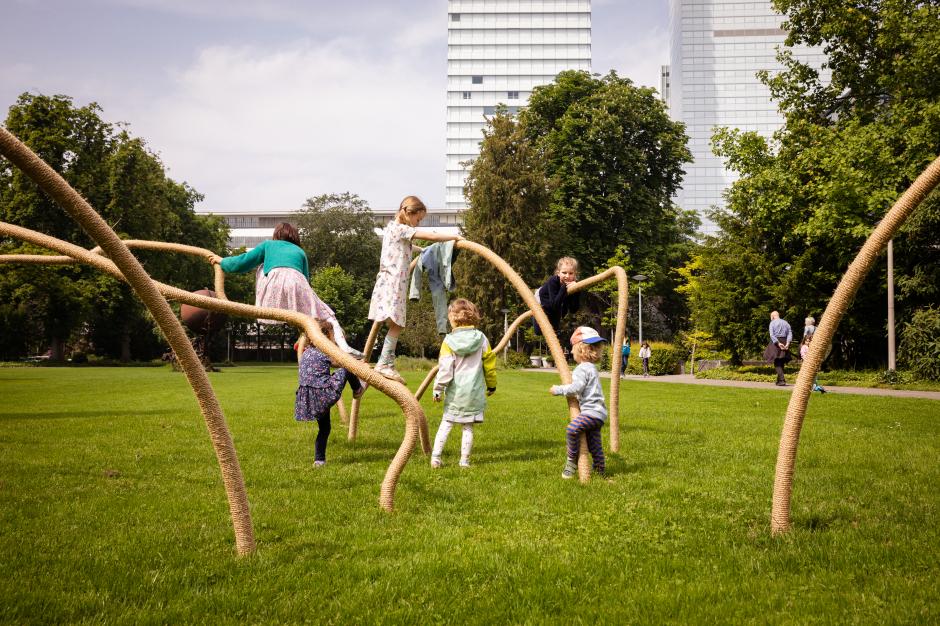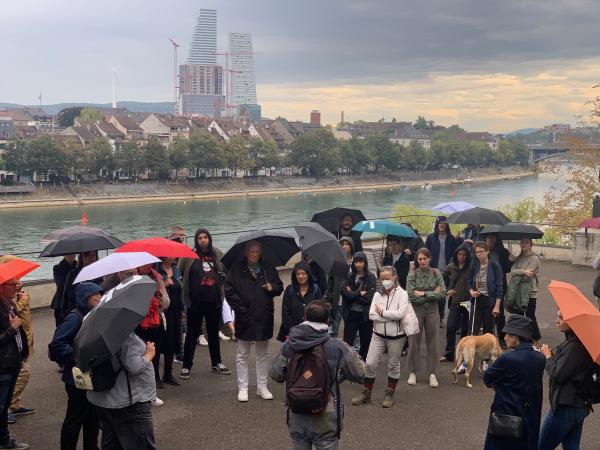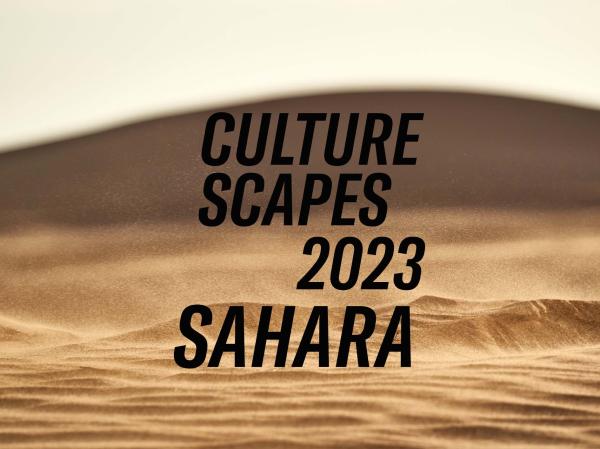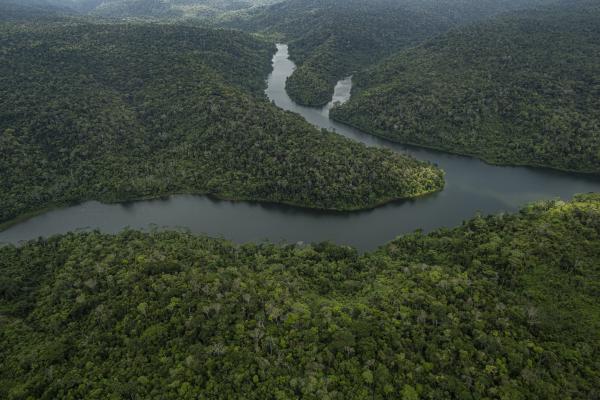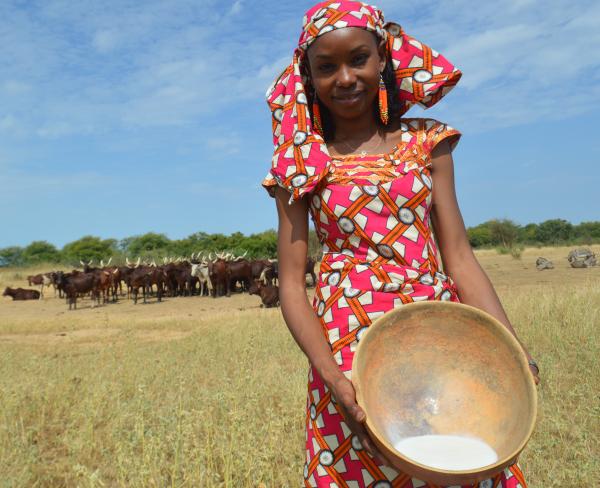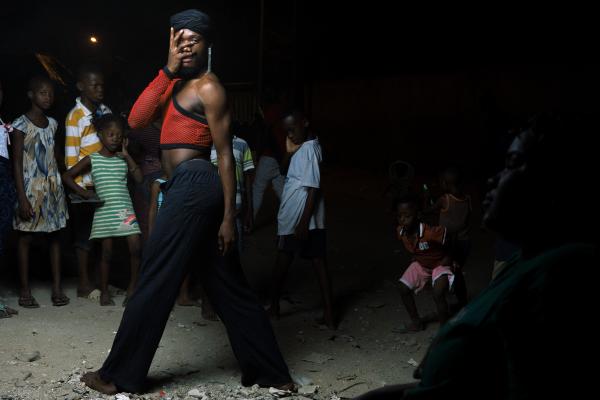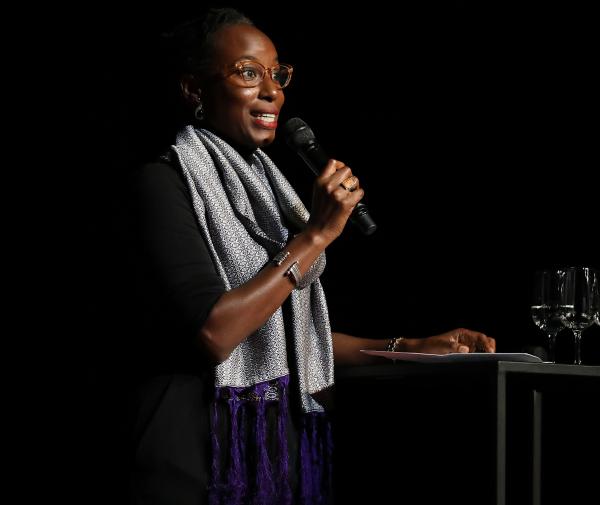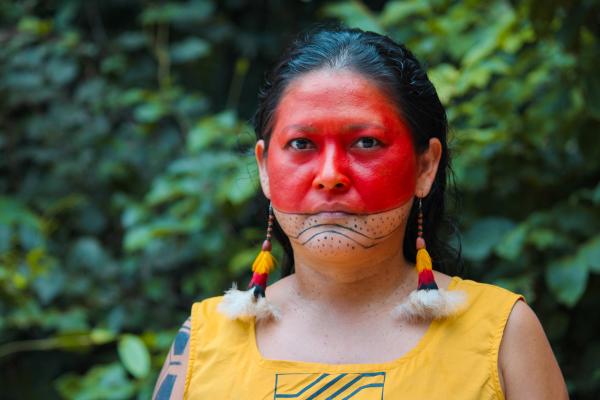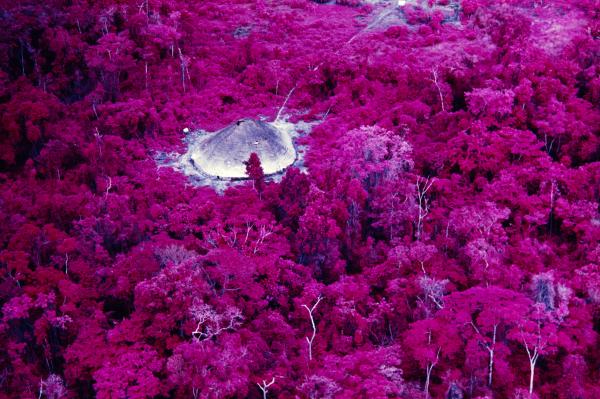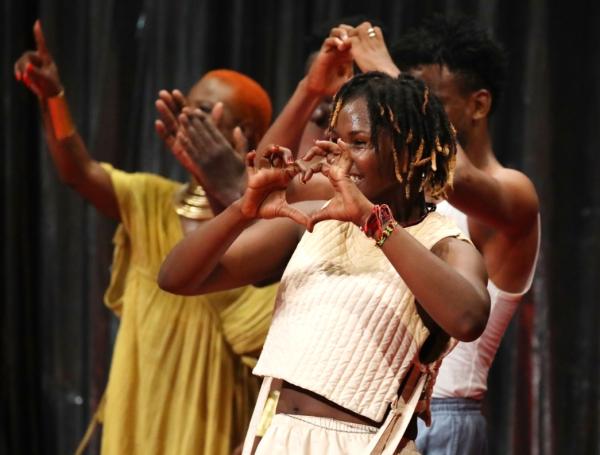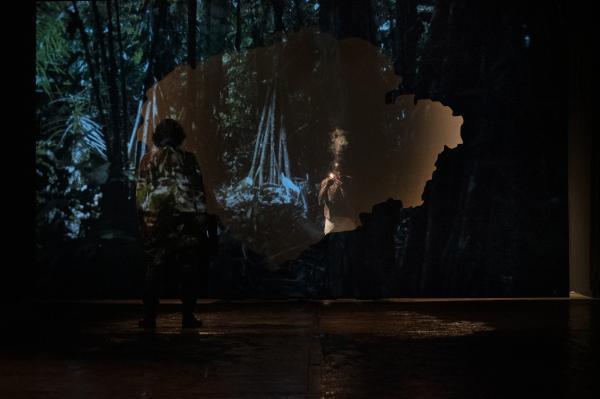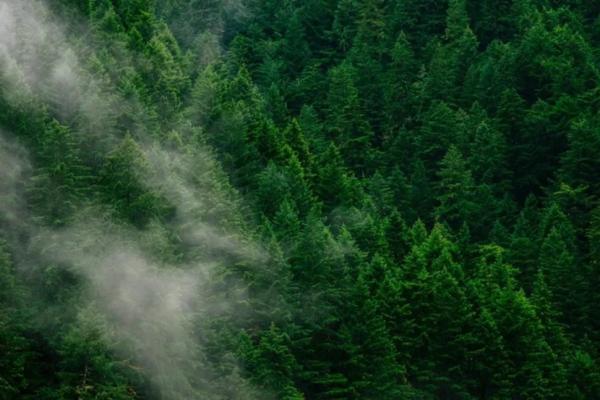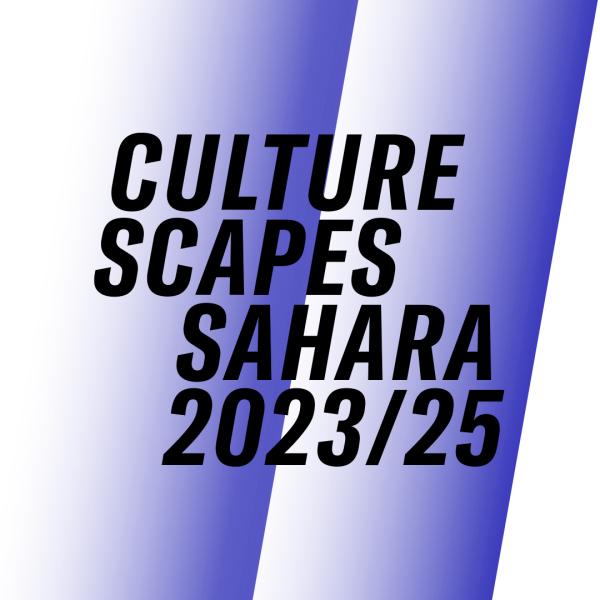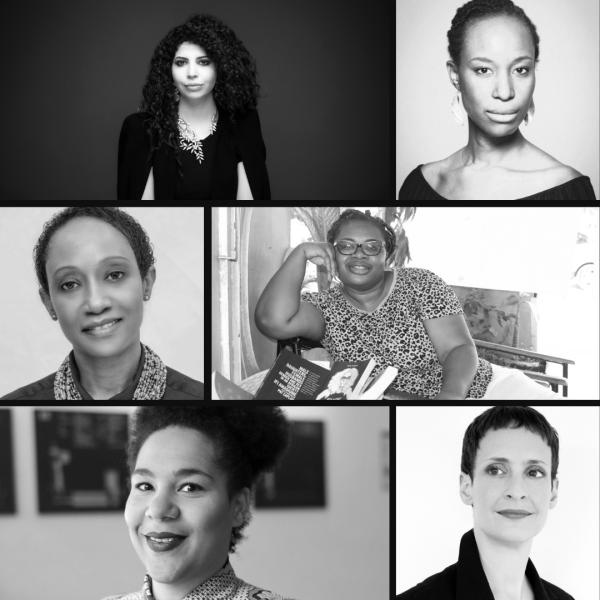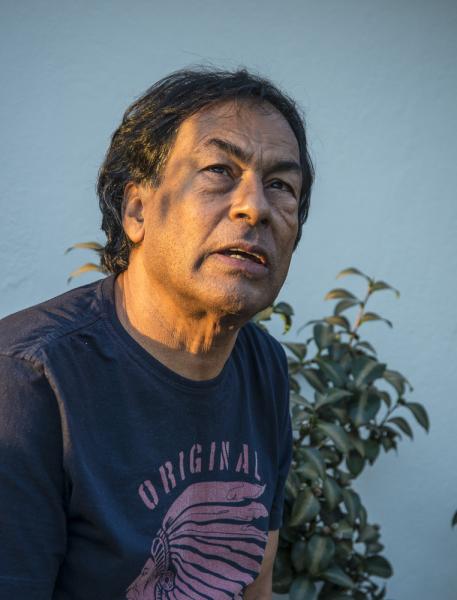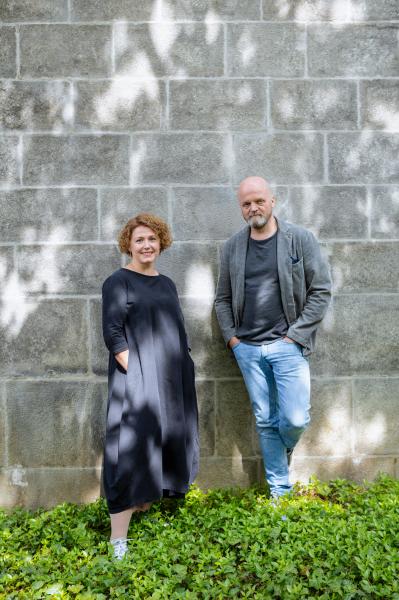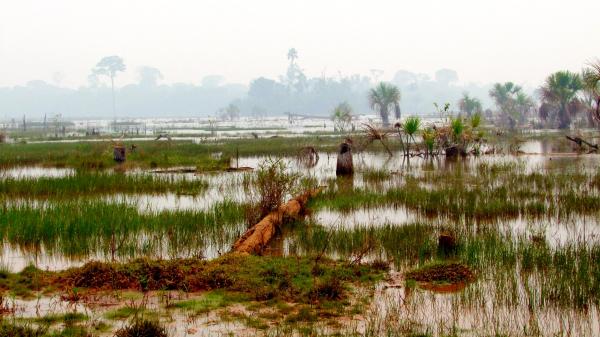On the impeccable lawn of Solitude Park in Basel, Switzerland, just next to the Rhein, there is a structure composed of weirdly shaped steel rods tightly wrapped with plant fibers. Some formed perfect semi-circles, while others are twisted and bent as if they follow the nearby river’s curves. On a sunny day, one could see loads of children and sometimes even adults climbing, swinging, and jumping all over this structure, even though nothing indicates that this is a playground. But this is indeed a playground, an interactive outdoor play structure, covered with the plant fibers, created by Nigerian artist Temitayo Ogunbiyi and commissioned by the Museum Tinguely for the Culturescapes 2023 Sahara festival.
In inquiries into play and playfulness as experiences of freedom, spontaneous and unaffected interaction, and movement, Temitayo also looks into realms where interaction is limited, movement is restricted, and liberty is scarce. The playground bars outline various paths that connect Basel to Lagos, her hometown, and different diaspora communities within Basel: some straight ones trace the trajectory of flights, and some twisted ones follow the imaginary walking paths plotted by Google.
Google says that walking from Lagos to Basel would take forty-two days: the route goes north, over the Sahelian part of Nigeria, meanders over the Sahara—Niger, Algeria, Tunisia—then even Google knows that humans cannot walk on water, so requires a ferry from Tunis to Gerona, and then continues again on foot across Italy, over the Alps, and voila—Basel.
The Sahara, the great African desert, which was once a network of multiple pathways and routes, was present in this installation as a space both physical and imaginary, geographical and symbolic. It was an exercise in the simultaneity of possibility—of connection, movement, circulation—and the impossibility of actually crossing the Sahara due to postcolonial, geopolitical, and environmental reasons. Behind an approximate route plotted by AI, there are numerous real paths, many of them are escape routes with countless real people trying to make it up north to live. Innumerable lives lost or injured through the hope of survival.
The Sahara is the focus of the Culturescapes festival, the twentieth anniversary of which Temitayo’s work preopened. Culturescapes 2023 Sahara opens on October 1 with the dance performance by Burkinabe-Belgian choreographer Serge Aimé Coulibaly “C La Vie” in Schauspielhaus of Theater Basel and presents almost 80 artists over two months. Together with its artists, curators, and cultural actors Culturescapes 2023 Sahara explores the role the desert has played and is playing now in the complex relationships between different parts of Africa and the fragile relationship between Africa and Europe.
“Historically, nothing justifies splitting the continent between the north and south of the Sahara Desert,” writes Achille Mbembe in his essay “Circulations” included in the festival anthology Sahara. A Thousand Paths Into the Future. Nevertheless, the colonial divisions, structural and symbolic roadblocks—or, the opposite, a lack of road and communication links— geopolitical tensions, and racialization still create multiple ruptures across the Saharan space. Culturescapes suggests scrutinizing these divisions in an attempt to see possible ways of healing and reconnecting. The festival program could also be read along three thematic lines: borders, resilience, and futures.
Is the Sahara a barrier, an impermeable border, a barren, hostile land? Or is it a habitat for various peoples and non-humans who made it their home, their travel route? Is the Sahara, cut with the straight lines of political borders drawn up by distant foreign rulers, a testimony to the colonial era, or a realm where questioning these borders and their consequences and calling to redraw them is possible? The question of borders as manifestations and causes of violence is a question of the power structures that enable and sustain them, as well as the entanglement of connections and relations that lay underneath and beyond visible borders.
The late Western Saharan poet Badi writes about tishuash, a feeling that could be roughly translated as “nostalgia” or, more correctly, “the pleasure of remembering things that are past.” Like many other Saharawis since the 1975 Moroccan invasion, he spent his last years in a refugee camp writing about the fighting and tishuash. (Culturescapes 2023 Sahara has a special focus on the Western Sahara, life and resistance of its inhabitants.) For the peoples in the greater Sahara-Sahel region, resistance, struggle, and survival are a way of life. Violence and suffering are daily realities for many. But the vocabulary of the Global North has a complimentary word for it—resilience. A word tinted with the fascination of the imagined power of the distant powerless, that blinds us to the actual price they must pay for it. What would non-resilient, but livable, lives in the Sahara look like?
Thinking of the Sahara and Africa in terms of a cultural revolution, rethinking power centers, humanistic revival, and free circulation of people and ideas, is what connects all the different parts of the Culturescapes program as a multidimensional network with a tinge of utopia. But isn’t it a perfect time to stop being afraid of utopias? The Saharan space offers a possibility to imagine multiple plural non-linear futures for a more just and equal, caring and humane world. As Senegalese philosopher Felwine Sarr writes, “From this day forward, as in the time of the first rising suns, Africa will once again become the spiritual lungs of the world.”
Image: Temitayo Ogunbiyi. You will follow the Rhein and compose play. Museum Tinguely, Basel. © Matthias Willi
